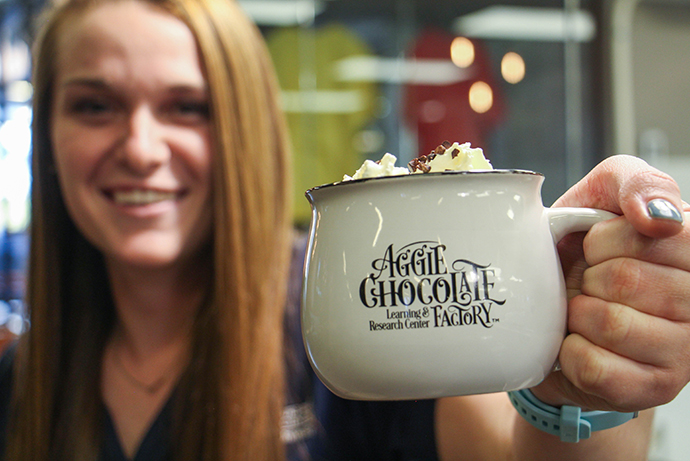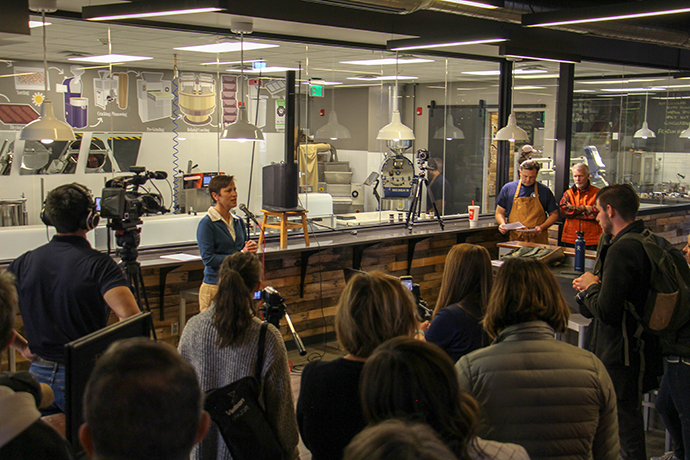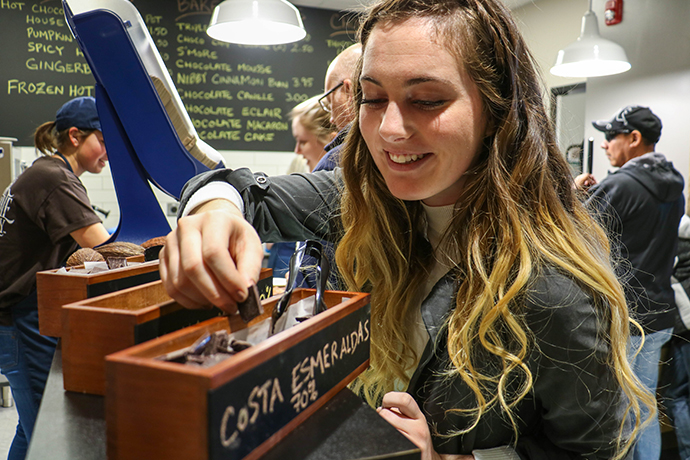Aggie Chocolate Factory: From Bean to Bar
by Lynnette Harris


The Aggie Chocolate Factory opened its doors to the public on November 16, 2018, welcoming a long line of chocolate lovers and foodies who came to taste the factory’s first collection of treats. The factory processes chocolate from bean to bar (and bean to beverage, brownie, pastry, and cookie), educates USU students, and serves as a resource for confectioners large and small who want to expand their chocolate offerings or experiment with new flavor profiles.
The workings of the Aggie Chocolate Factory are visible behind a glass wall in the restaurant area of the Aggie Blue Square complex, west of Maverik Stadium.
“The factory serves several purposes, but it is first a laboratory for students in food science,” said Professor Silvana Martini. “It will also facilitate research and outreach to the confectionary industry. This will be the only chocolate factory at a university in the western United States that is processing from bean to bar, and people in the industry are excited about the opportunities for short courses and working with us.”
The factory can work in batches as small as a single kilo of cocoa beans or up to as much as 250 kilos, and all beans are sourced from sustainably farmed operations that receive fair trade prices for their product. To begin with, the Aggie Chocolate Factory produces its dark chocolate from beans grown in Belize and Ecuador.
“Most artisan chocolate makers are involved in ethically sourcing cocoa beans from farmers or co-ops, making sure people get fair market value for their crops, and investing time and money to help farmers develop ways to process their crop, manage fermentation, and providing them an outlet for their cocoa,” said Steve Shelton, manager of the Aggie Chocolate Factory. “We have opportunities to do good in the world, and everybody likes chocolate.”
Shelton looks forward to the many possibilities that come from bean-to-bar production because so many flavor nuances can be developed based on where and how the cocoa was grown, fermented, and roasted.
“Ten people can start with the same beans and come up with 10 different flavors of chocolate,” Shelton said. “It is similar to what coffee roasters do to create different flavors, but there are more subtle nuances possible with cocoa beans.
For more information, go to the Aggie Chocolate website.




